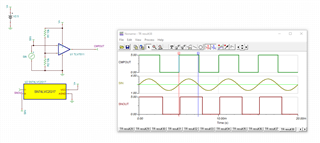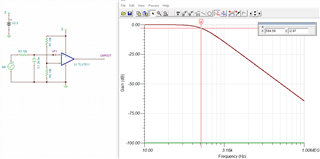Other Parts Discussed in Thread: SN74LVC2G17, TLV9032, TLV3202, TLV9034, TLV7011, TLV7012
Dear TI Community,
We are currently developing a low-cost condition-based monitoring system that involves measuring the vibration, current, and speed of equipment parts. Our focus is on integrating the ADA4570/71 AMR Speed Sensor into the system to accurately measure shaft speed.
To convert the AMR sensor's SINE and COSINE waves into square waves, we are exploring a Comparator-based design instead of an ADC-based approach. These square wave signals will be fed into the Quadrature Encoder Interface (QEI) of the STM32G474 MCU. The distance between the sensor and the MCU is 1m, and we plan to use a standard 24AWG STP cable for connectivity.
We kindly request your expertise and guidance in providing a reference design that optimizes cost while ensuring reliable and robust performance for this application. Specifically, we seek recommendations for suitable filters, hysteresis settings, and any additional measures to enhance the solution's performance.
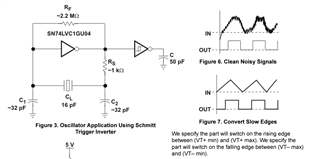
Our approach involves considering the following:
Use of the TLV7022 comparator for zero crossover detection and triggering.
Installation of SN74LVC2G17 Schmitt triggers at the MCU end to improve signal quality.
Exploration of the direct use of the Schmitt Trigger SN74LVC2G17 for converting the SINE wave into a square wave.
We have the following specific questions:
- Is the use of a Schmitt trigger to convert the SINE wave into a square wave a reliable solution?
- Considering our 1m cable length, can we use two sets of Schmitt triggers (one at each end) to minimize the impact of noise? Are there any potential design considerations we may have overlooked?
- What additional passive circuitry would be required for the output signals from the ADA4570 or ADA4571 (differential or single-ended signals) into Square waves?
- Do you have any additional suggestions or guidance based on your experience in similar applications?
- We kindly request your insights on the most optimal Comparator-based Zero-crossover solution that allows for the reliable transfer of a 0-5V square wave over a 1m distance from the sensor to the MCU.
- Furthermore, we are interested in understanding the potential benefits of incorporating Schmitt triggers at the MCU end to enhance signal quality.
Thank you in advance for your valuable assistance in addressing our query. We greatly appreciate your expert recommendations and suggestions.
Best regards

Sensor Output Schematic:
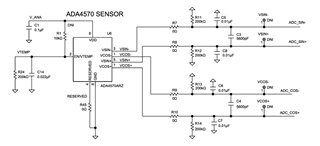
Differential Signal specifications:
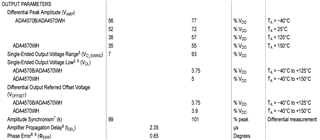
Best regards,


